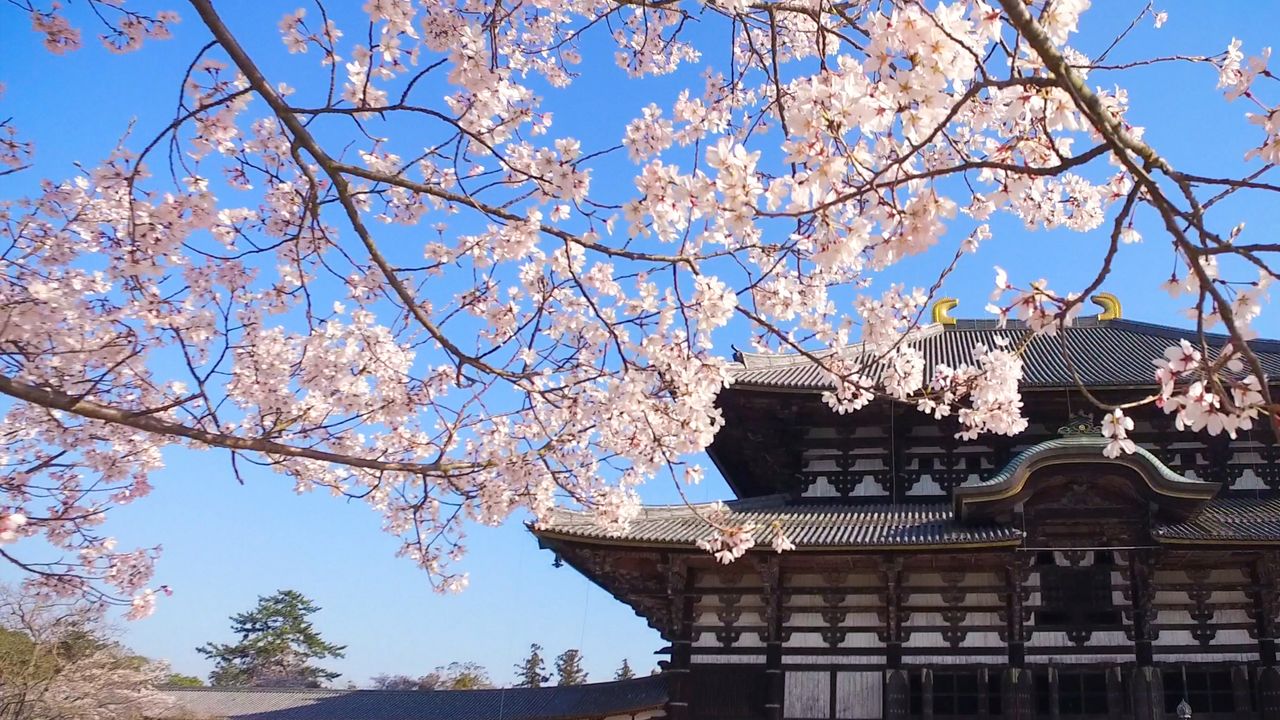
Nara’s Top Cherry Blossom Sites
Guideto Japan
Travel- English
- 日本語
- 简体字
- 繁體字
- Français
- Español
- العربية
- Русский
Nara Park, Tōdaiji, and Kasuga Shrine
Nara Park, one of the traditional sightseeing locales in the city of Nara, is a sprawling place, spanning 660 hectares. There are some 1,700 cherry trees in bloom there, including nara-no-yaezakura, the official flower of Nara Prefecture, as well as somei yoshino and wild cherry trees. Owing to this wide variety of cultivars, the park offers an extended blossom-viewing season, from late March to late April annually, all of which earns the park a place on the list of the top 100 cherry blossom sites in Japan.
The park also sports a number of other points of interest. These include religious sites like the temple Tōdaiji and Kasuga Shrine, which are part of the Historic Monuments of Ancient Nara UNESCO World Heritage Site, and cultural landmarks like the Nara National Museum. The park as a whole offers various ways to enjoy the charms of the cherry blossoms, including seeing them together with the deer that are the emissaries of Kasuga Shrine or blooming against a backdrop of the historical buildings on the grounds.
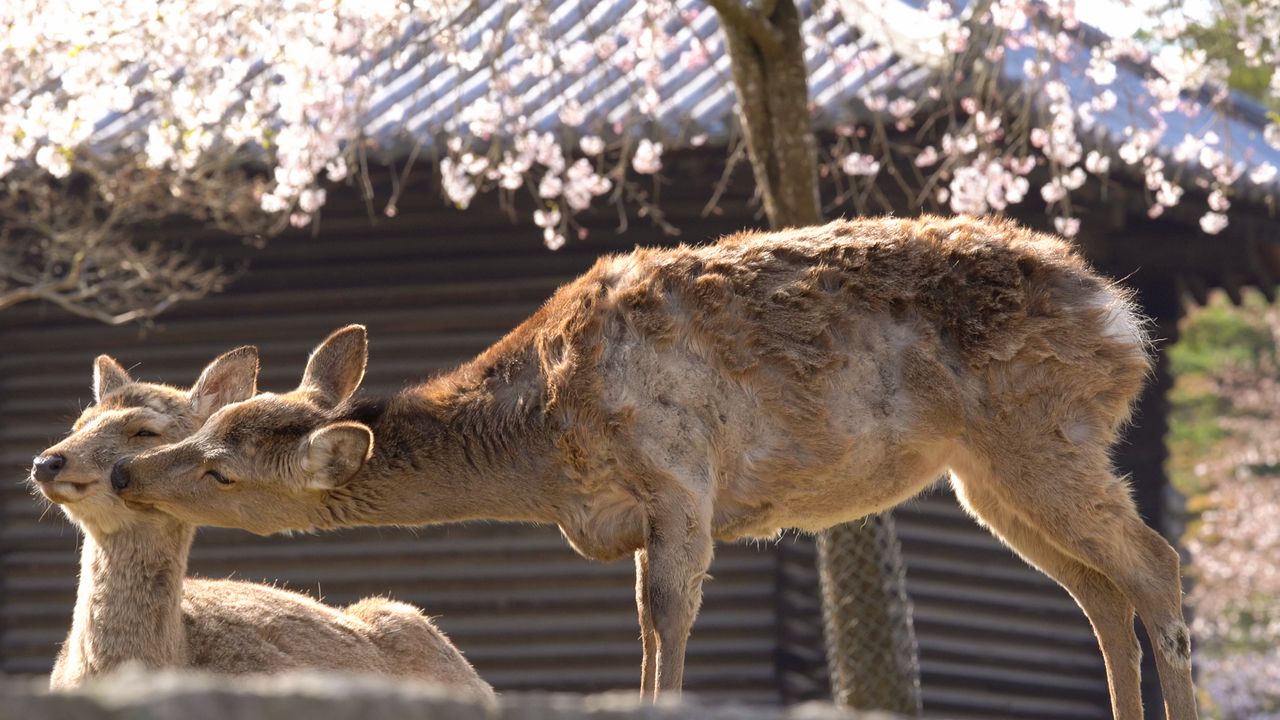
The deer and the blossoms of Nara Park make a comforting sight.
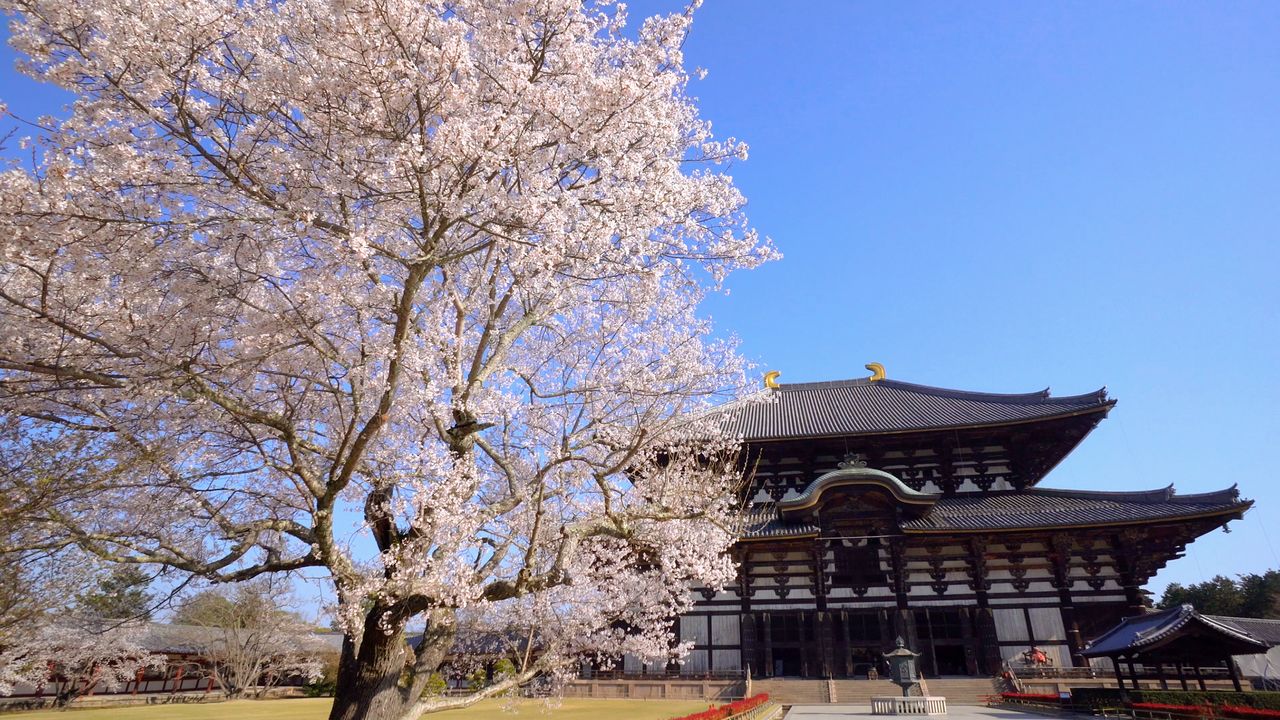
The main hall of Tōdaiji, which houses the Great Buddha statue of Nara, sets off the surrounding cherry trees.
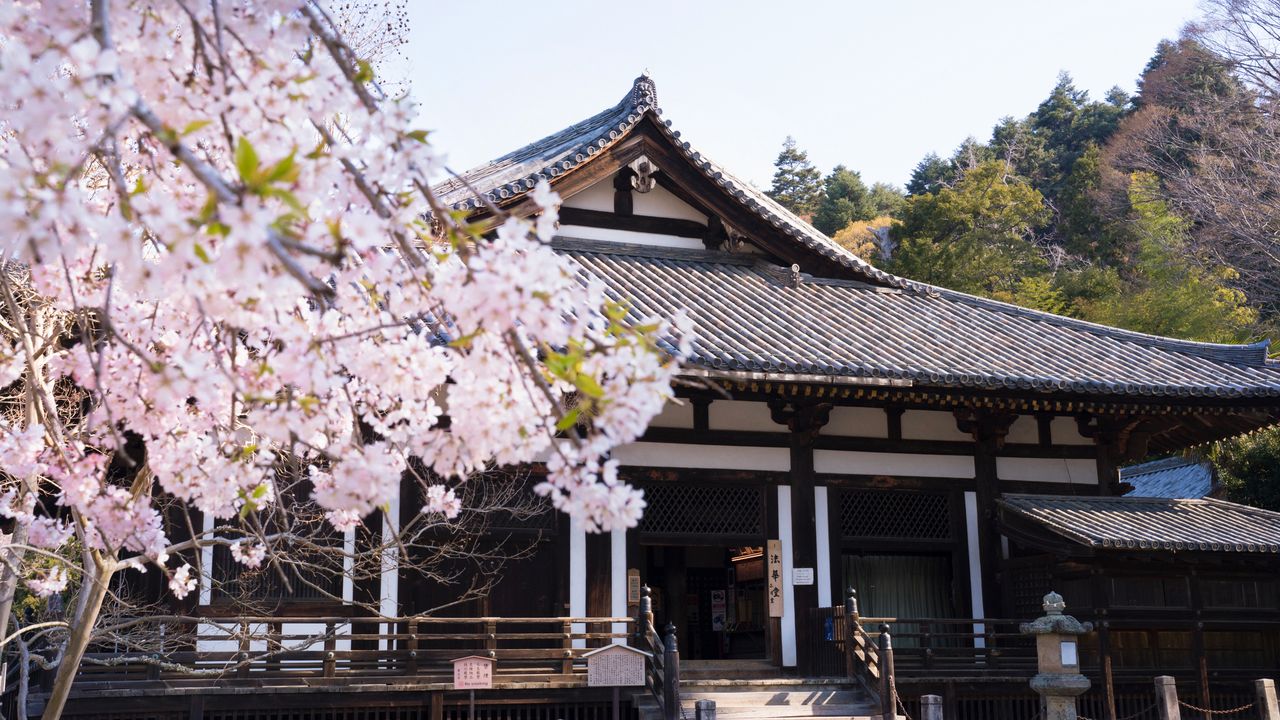
Built in the Nara period (710–94), Sangatsudō (Hokkedō), highlighted by cherry blossoms, is the oldest structure on the Tōdaiji grounds.
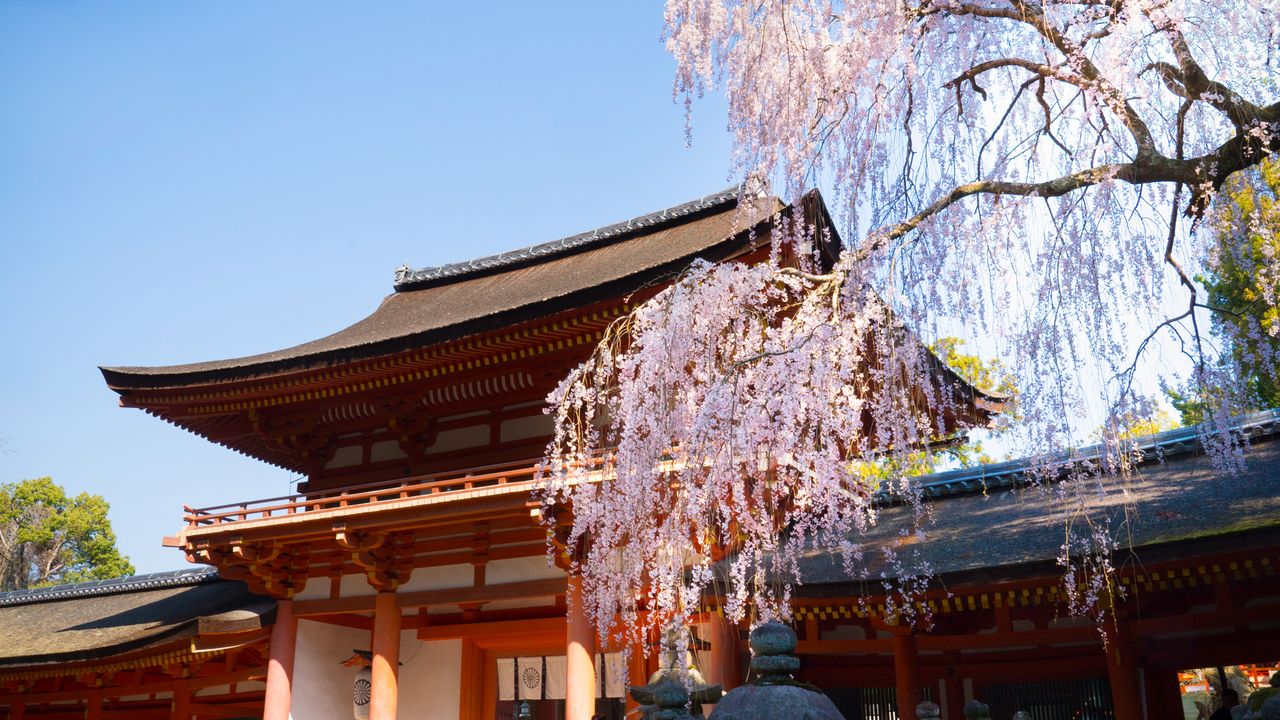
Weeping cherry trees bloom near the crimson Sanmon gate of Kasuga Shrine.
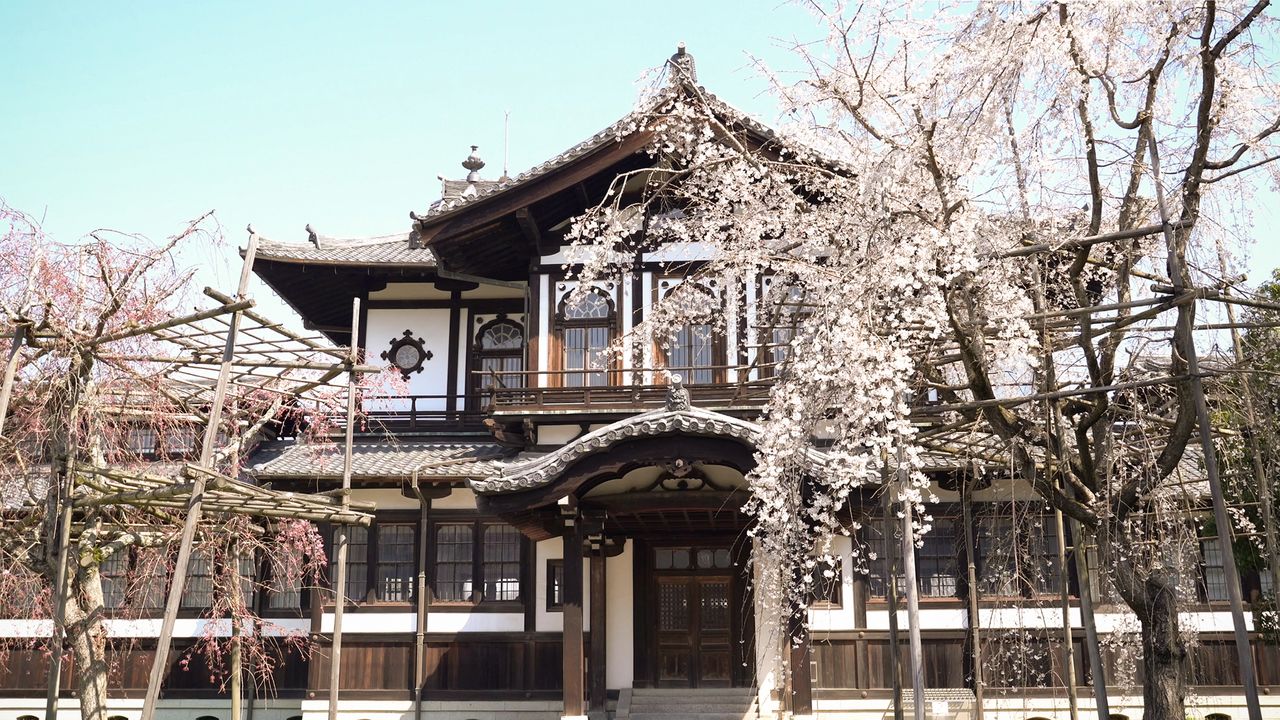
The Nara National Museum Buddhist Art Research Center, an example of modern Japanese architecture and a nationally designated important cultural asset, elegantly draped with blossoms.
Castle Ruins and a Gigantic Tree
The Kōriyama Castle ruins in the city of Yamatokōriyama, just south of Nara, offer a place to enjoy the spring trees on castle grounds. Built in 1580 by Tsutsui Junkei, who had been a daimyō of the Warring States period (1467–1568), it was formally occupied by Toyotomi Hidenaga, then by the lords of the Kōriyama Clan during the Edo period (1603–1868). The buildings were demolished in the early Meiji era (1868–1912), leaving only the stone wall and the moat of the keep. The Ōtemon gate (also known as the Bairinmon) and two of the castle towers were restored in the 1980s, and a donjon observation facility was opened to the public in 2017. The site is known for the weeping cherry trees that lavishly decorate the towers and the stone wall. There are some 800 cherry trees blooming on the grounds in all, earning the ruins a spot on the list of the top 100 cherry blossom sites in Japan. The annual Yamatokōriyama Castle Festival draws many attendees for such events as a nighttime light show and a historical pageant with warriors in traditional Japanese armor parading around the grounds.
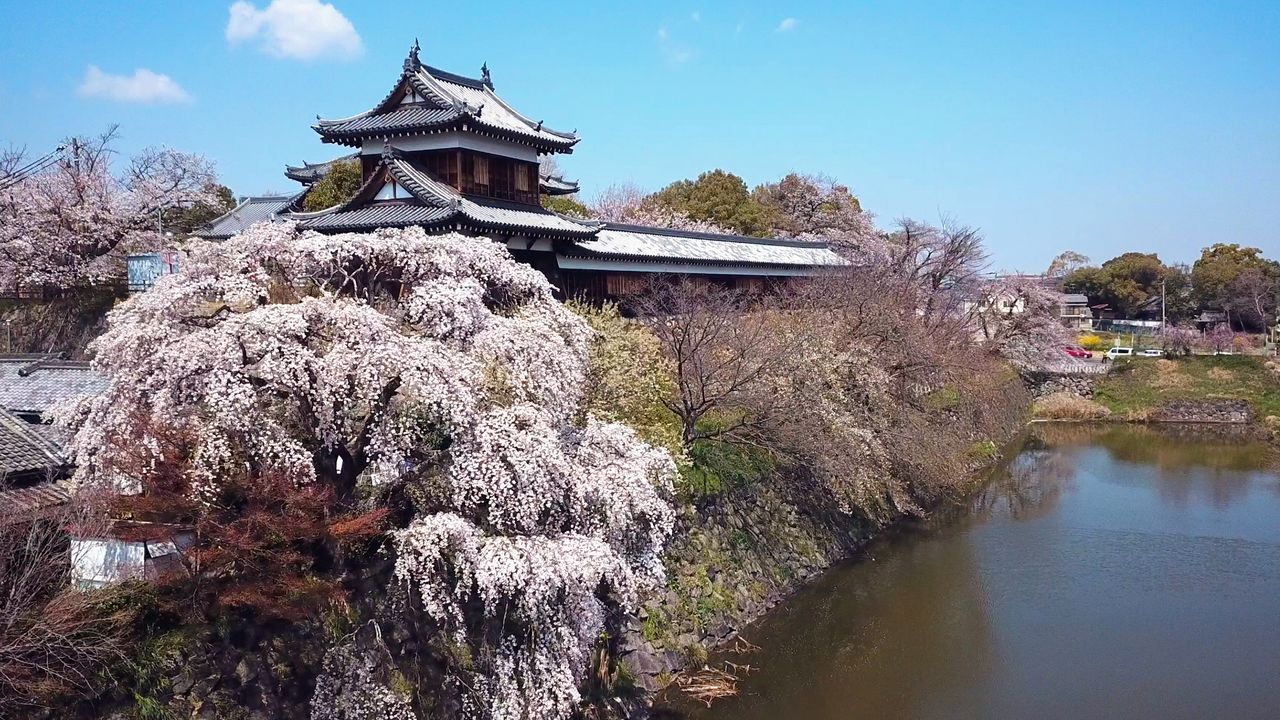
Elegant weeping cherries decorate the towers and moat of the Kōriyama Castle ruins.
The Ō-uda-hongō district in the city of Uda, southeast from Nara, is home to a famed cherry tree estimated to have been growing for 300 years. Known as the Matabē-zakura, it stands 13 meters in height, and has a circumference of over three meters. The name derives from a legend in which Gotō Matabē, a warlord who fought in the Battles of Osaka (1614–15), fled to this spot and died there. The site is also known as Hongō-no-takizakura, the “waterfall cherry of Hongō,” for the riotous manner in which the cherry blossoms bloom in the spring, giving the appearance of a cascade.
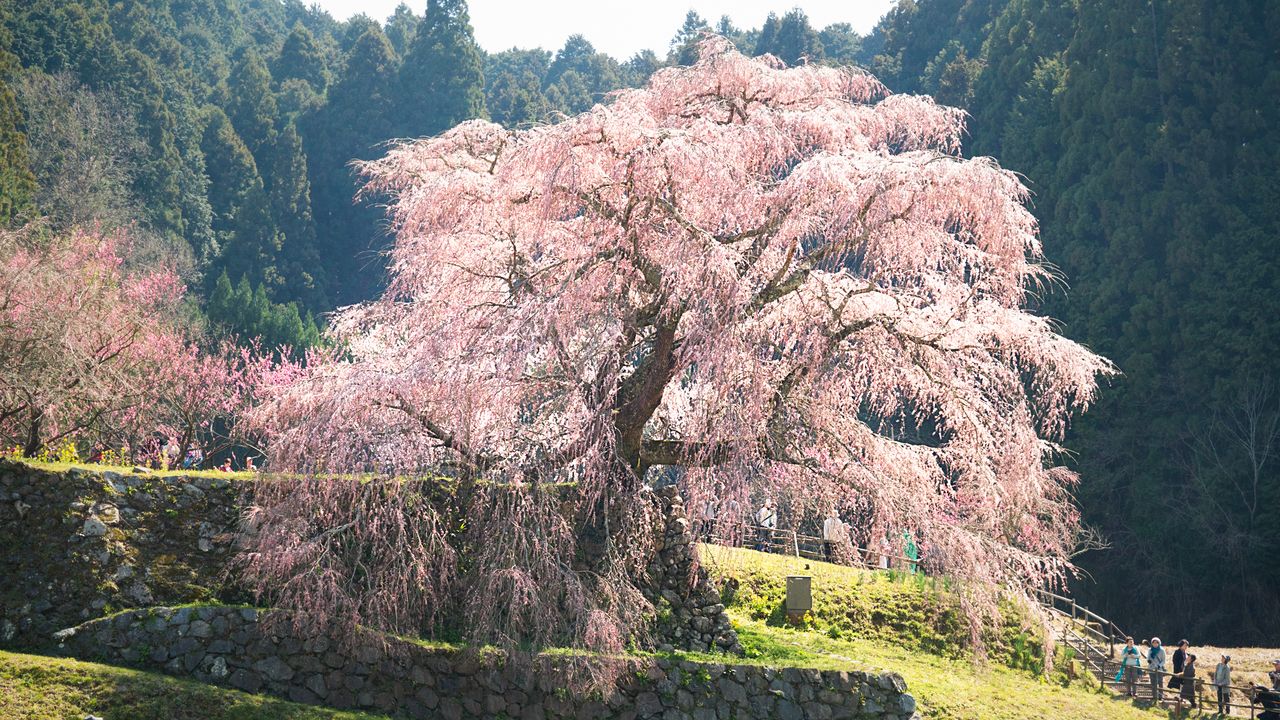
The impressive Matabē-zakura, accompanied by brilliantly blooming peach trees in the background.
The Thousands of Trees at Mount Yoshino
One of the top cherry blossom sites in all of Japan is Mount Yoshino, whose slopes are covered in some 30,000 cherry trees of some 200 varieties, chief among these being shiro-yamazakura (Prunus jamasakura). The resulting pink panorama is a breathtaking scene that lets visitors see a thousand cherry trees at a glance in any direction.
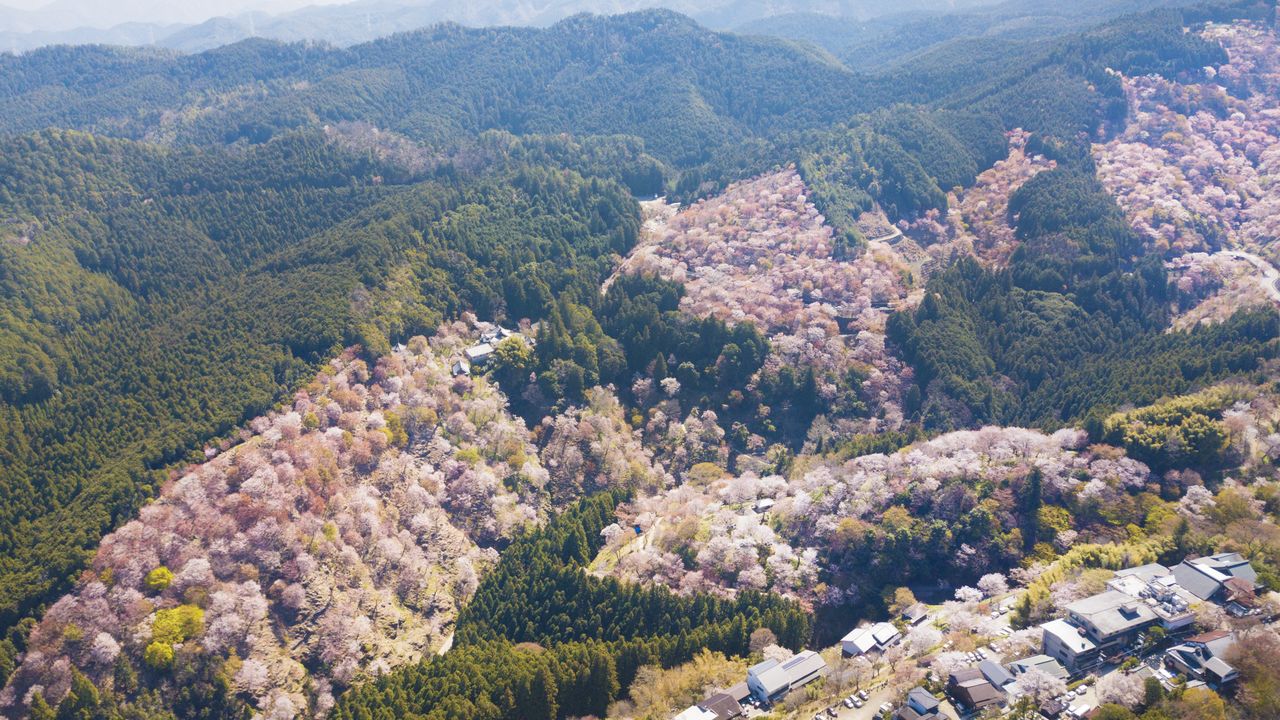
An aerial view of Mount Yoshino’s cherries.
The origin of the cherry trees of Mount Yoshino goes back over 1,300 years, to a time when En-no-gyōja, said to be an originator of shugendō (mountaineering asceticism), carved out of a mountain cherry a figure of Zaō Gongen (the principal Buddhist idol of shugendō), which was manifested at the culmination of rigorous training practices. Those who came to worship the figure in subsequent times planted cherry trees on the site, and in time, the entire mountain was covered in cherry blossom colors.
The trees bloom in stages up the mountainside, as though gradually ascending a mountain path. In order starting from the foot of the mountain, these stages are referred to as shimo-senbon (the lower thousand), naka-senbon (the middle thousand), kami-senbon (the upper thousand), and oku-senbon (the far thousand). As a result, the mountain presents prime blossom viewing for a lengthy period throughout the month of April. Shimo-senbon is best viewed from below, and oku-senbon from above at an observation deck at the summit.
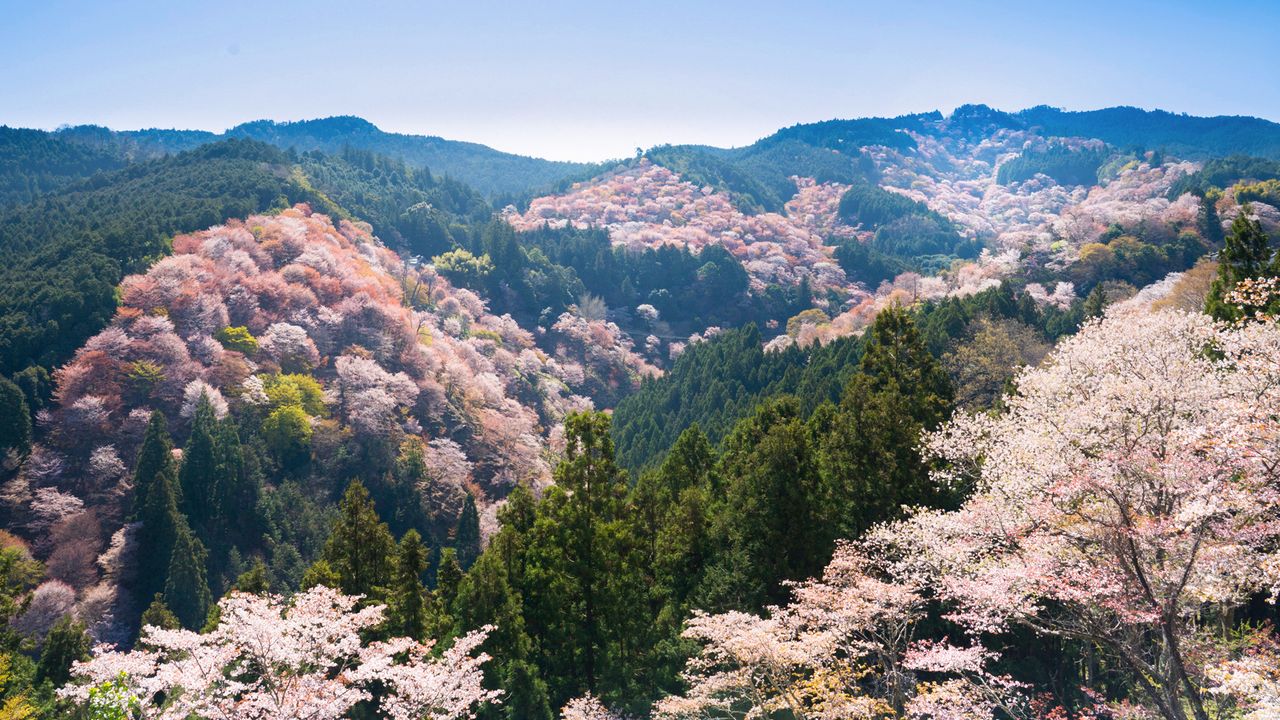
The densely blooming cherry trees are unmistakably hitome-senbon (a thousand trees at a glance).
(Originally published in Japanese. Reporting and text by Fujii Kazuyuki, 96Box. Photographs by Kuroiwa Masakazu and Fujii Kazuyuki, 96Box. Banner photo: Cherry trees with the main hall of Tōdaiji temple.)
Nara tourism World Heritage sakura Kansai cherry blossoms in Japan